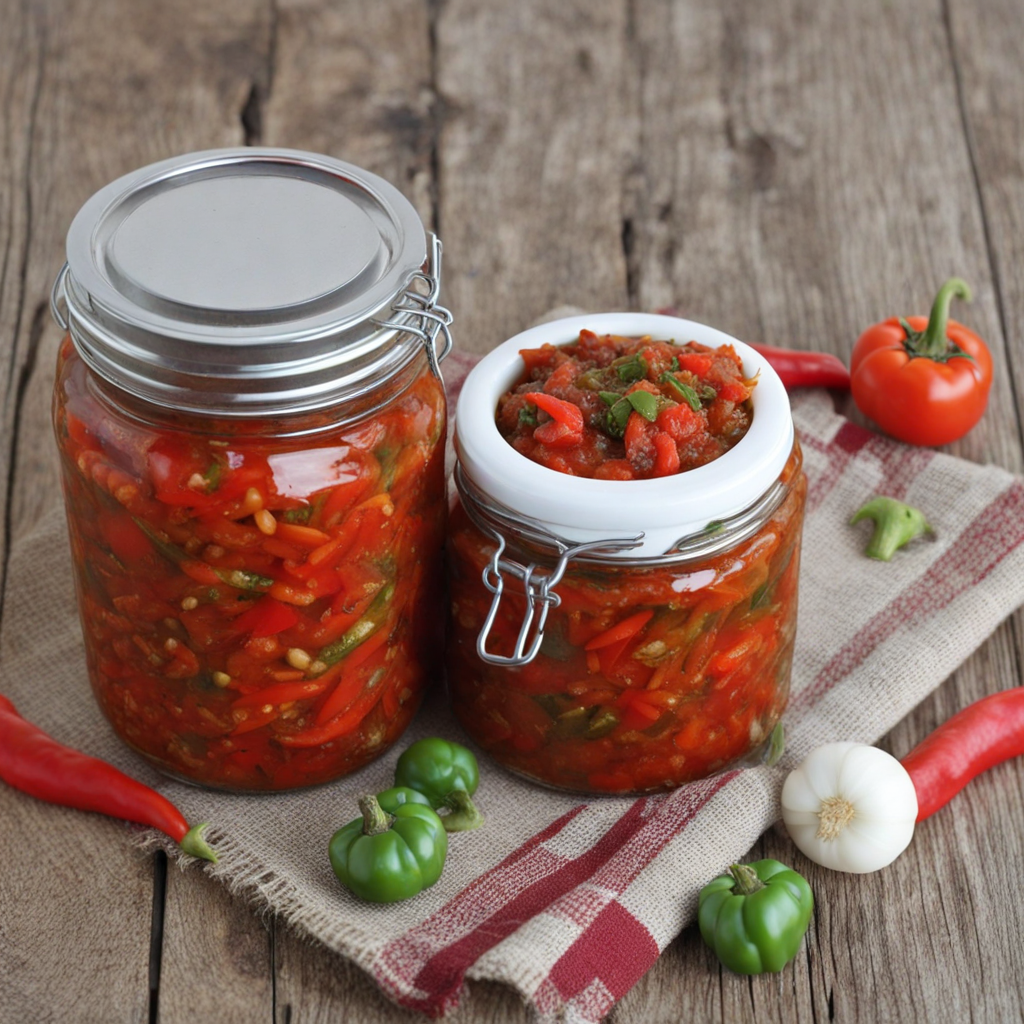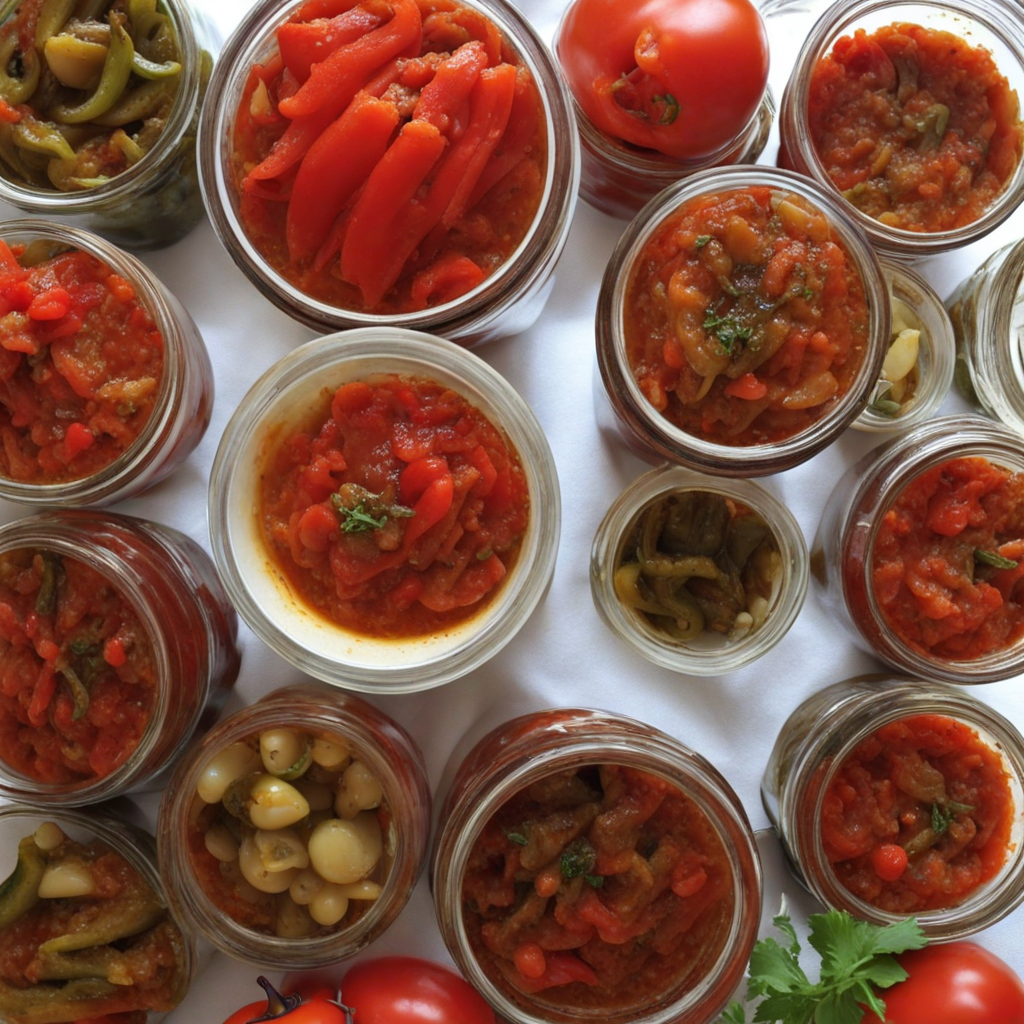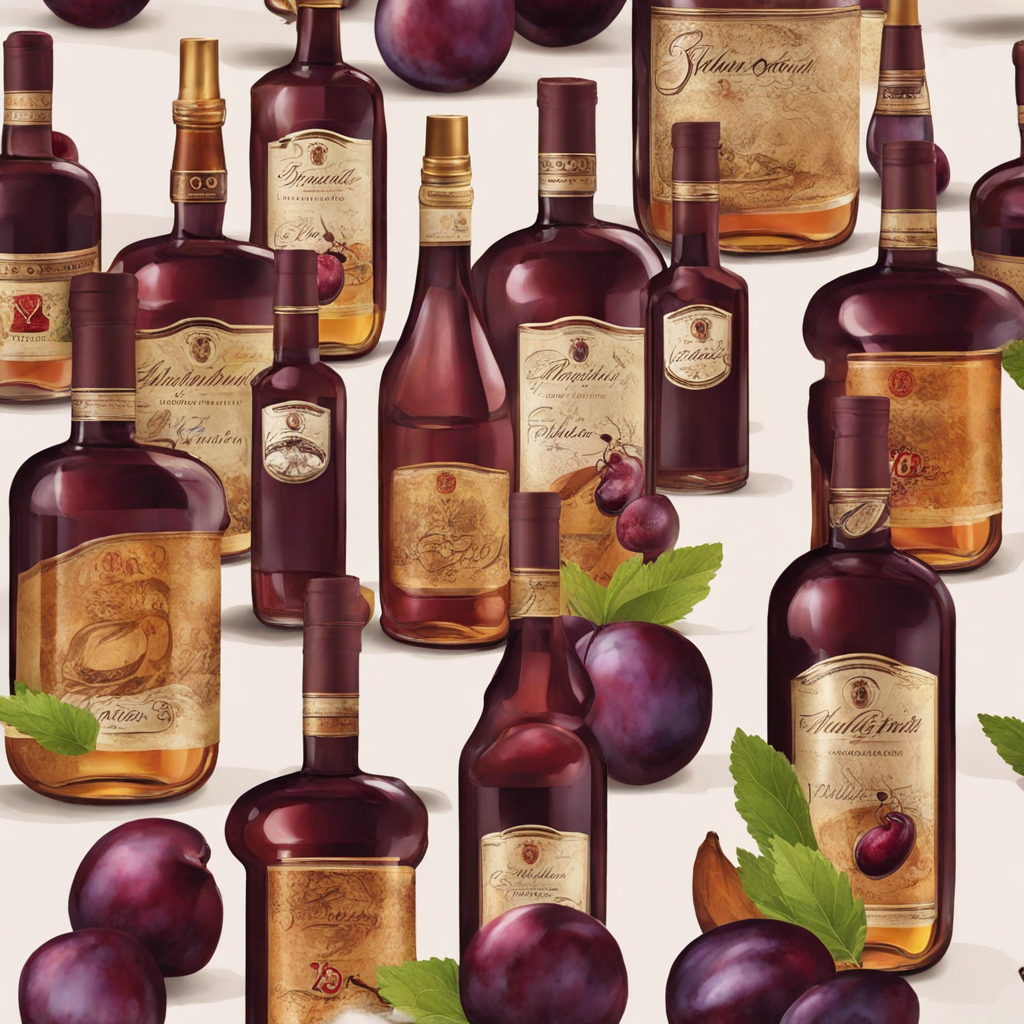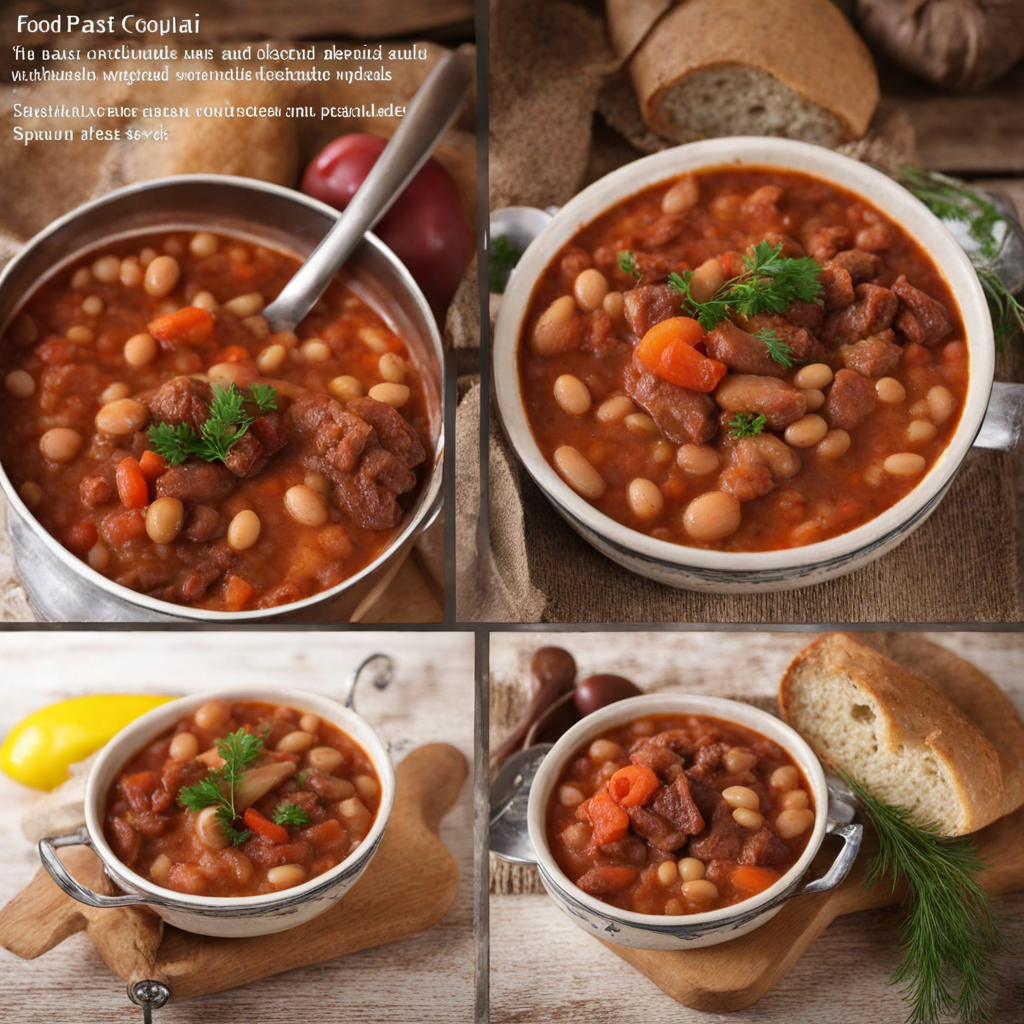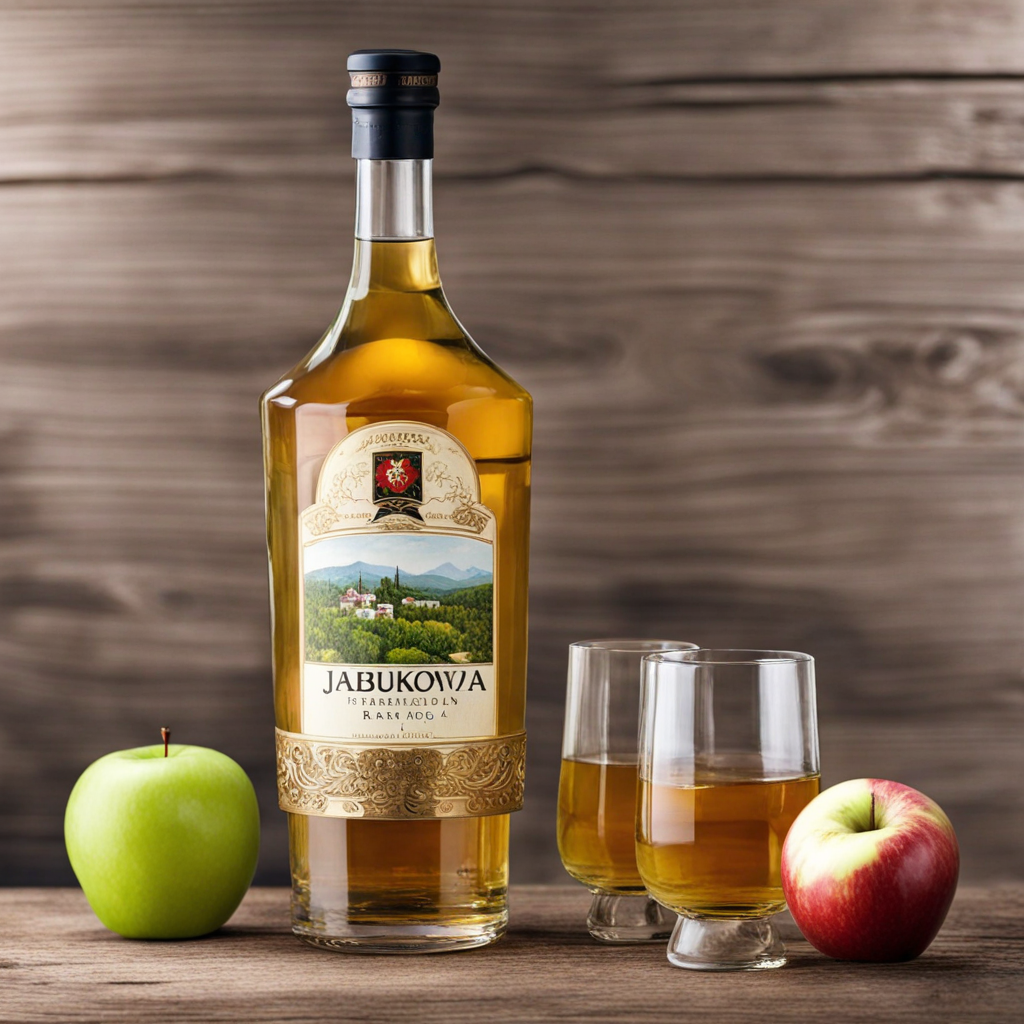Pindjur
Pindjur is a delightful Serbian condiment that captures the essence of Balkan cuisine, combining the rich flavors of roasted peppers, tomatoes, garlic, and spices. This vibrant spread is a perfect representation of the region's agricultural bounty, utilizing fresh, seasonal ingredients to create a dish that is both hearty and comforting. The roasted red peppers lend a smoky sweetness, while the tomatoes add depth and acidity, making Pindjur a versatile addition to any meal. With its rustic texture and bright color, it not only pleases the palate but also the eyes, making it an inviting choice for any dining table. Typically enjoyed as a dip or spread, Pindjur is often served alongside crusty bread, grilled meats, or as part of a charcuterie board. Its unique flavor profile makes it a fantastic complement to a variety of dishes, enhancing everything from simple appetizers to more complex main courses. The addition of garlic and spices creates a harmonious blend that elevates the overall experience, inviting diners to savor each bite and discover the layers of flavor within. In Serbian households, Pindjur is frequently prepared in large batches, especially during the harvest season when peppers and tomatoes are at their peak. It can be enjoyed fresh or preserved in jars for later use, allowing the taste of summer to be relished year-round. This cherished dish not only showcases the culinary traditions of Serbia but also embodies the warmth and hospitality of its people, making it a must-try for anyone looking to explore new flavors and culinary experiences.
How It Became This Dish
The History of Пинџур: A Serbian Culinary Treasure Origins and Ingredients Пинџур, pronounced "pin-dzhoor," is a vibrant Serbian condiment that encapsulates the essence of Balkan cuisine. Its roots can be traced back to the rural traditions of the region, particularly among the populations of Serbia, as well as neighboring countries like Bosnia and Montenegro. The word "пинџур" itself likely comes from the Turkish word "pencer," meaning window, alluding to the way the dish opens up a window into the rich culinary traditions of the Balkans. The primary ingredients of пинџур are simple yet flavorful: ripe red peppers, eggplants, tomatoes, garlic, and spices. The foundation of this dish lies in the abundant gardens of the Serbian countryside, where these vegetables thrive in the warm summer sun. Traditionally, the preparation of пинџур coincides with the harvest season when families gather to make large batches of this cherished condiment, preserving the flavors of summer for the colder months ahead. Cultural Significance Пинџур is more than just a condiment; it is a symbol of Serbian hospitality and culinary heritage. In Serbian households, it is often served as a side dish, accompaniment, or spread, showcasing the rich flavors of the region. It is traditionally enjoyed with bread, meats, or alongside other dishes, such as grilled vegetables and cheeses, enhancing the overall dining experience. Its significance extends beyond the dinner table. The preparation of пинџур often involves communal efforts, with families and friends gathering to roast peppers and eggplants over open flames, a process that infuses the dish with smoky flavors. These gatherings foster a sense of community and connection, reinforcing the ties that bind families and neighbors together. This shared experience underscores the importance of food as a cultural touchstone, reflecting the values of cooperation, tradition, and celebration. Historical Development The history of пинџур is intricately linked to the agricultural practices of the Balkans. The Ottomans, who ruled over the region for several centuries, introduced new cultivation techniques and a variety of ingredients that would shape the local cuisine. The use of peppers, for instance, became prevalent during this period, and their incorporation into traditional dishes like пинџур marked a significant shift in the culinary landscape of Serbia. In the 19th century, as Serbia began to assert its national identity and move away from Ottoman influence, traditional foods like пинџур became emblematic of Serbian culture. The dish was embraced by the burgeoning middle class, who sought to celebrate their heritage through food. Cookbooks began to emerge, documenting traditional recipes and promoting the use of local ingredients, further solidifying пинџур's place within Serbian culinary tradition. During the 20th century, pинџур continued to evolve alongside the socio-political changes in the region. Following World War II, the establishment of Yugoslavia brought about a blending of culinary traditions from different ethnic groups. While пинџур remained a distinctly Serbian dish, its variations and interpretations began to appear in neighboring countries, each adding their unique twist to the recipe. This cross-pollination of culinary practices enriched пинџур, leading to diverse flavors and preparations that reflect the multicultural tapestry of the Balkans. Modern-Day пинџур Today, пинџур enjoys a renewed popularity, both in Serbia and among the Serbian diaspora worldwide. As globalization has brought diverse culinary influences into the kitchen, many chefs and home cooks alike have reimagined traditional recipes, incorporating modern techniques while honoring the essence of пинџур. In Serbia, it is common to find пинџур in supermarkets and local markets, often sold alongside other traditional products. Artisanal producers have emerged, crafting their variations of the dish, experimenting with different spices and methods of preparation. Organic and locally sourced ingredients have become a hallmark of these modern iterations, appealing to a growing demographic that values sustainability and quality. Social media has also played a significant role in revitalizing interest in traditional Balkan cuisine. Food bloggers and influencers showcase пинџур as a versatile condiment, often pairing it with contemporary dishes, bridging the gap between tradition and modernity. This digital renaissance has sparked a renewed interest among younger generations, encouraging them to explore their culinary heritage. Conclusion In conclusion, пинџур represents much more than just a condiment; it is a vibrant reflection of Serbian culture, history, and community. Its origins in the fertile lands of Serbia, coupled with its evolution through centuries of social and political change, have solidified its status as a beloved staple of Balkan cuisine. As it continues to adapt and thrive in the modern culinary landscape, пинџур stands as a testament to the enduring power of food to connect people, celebrate heritage, and foster a sense of belonging. Whether served at family gatherings, festive celebrations, or enjoyed in the quiet comfort of home, пинџур remains a cherished symbol of the flavors and traditions that define Serbian identity.
You may like
Discover local flavors from Serbia


